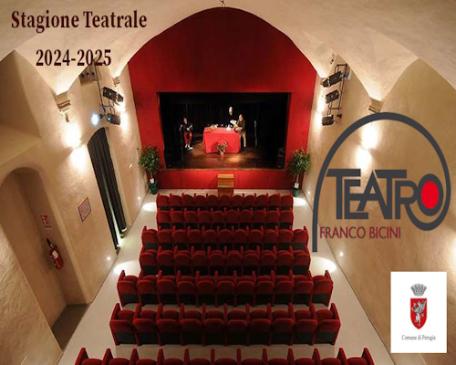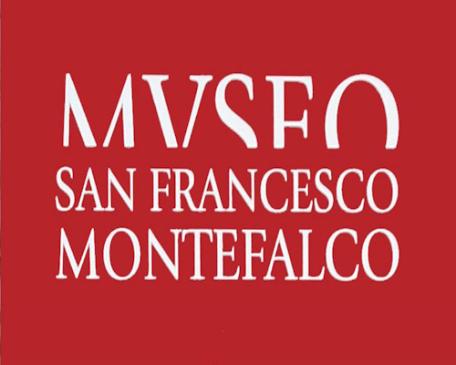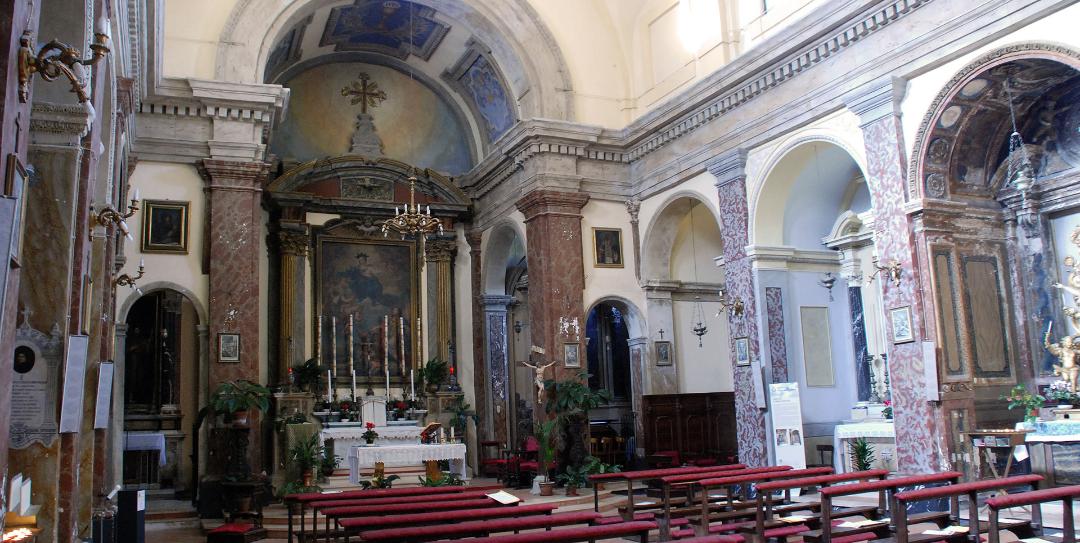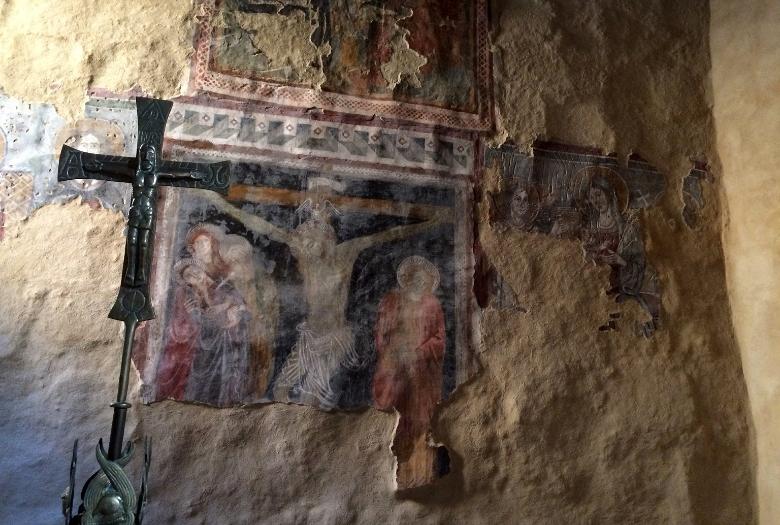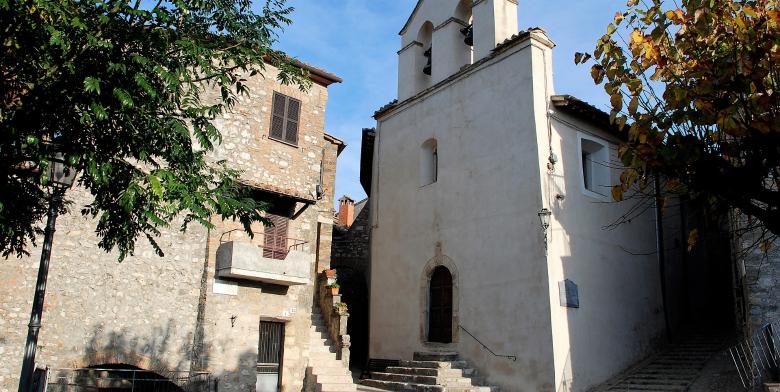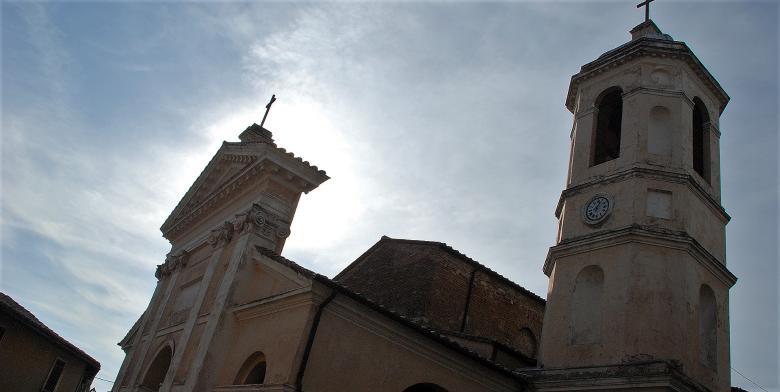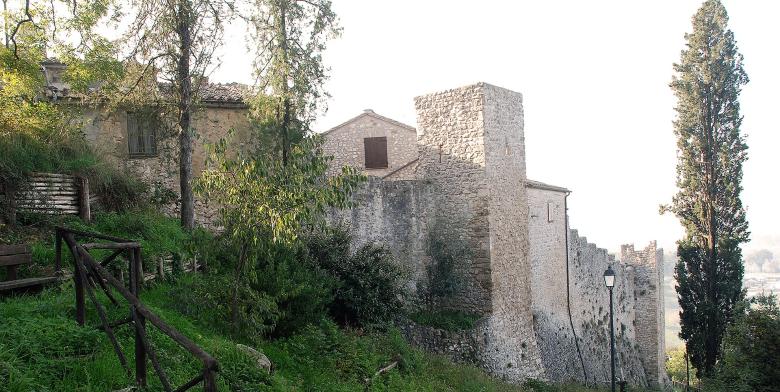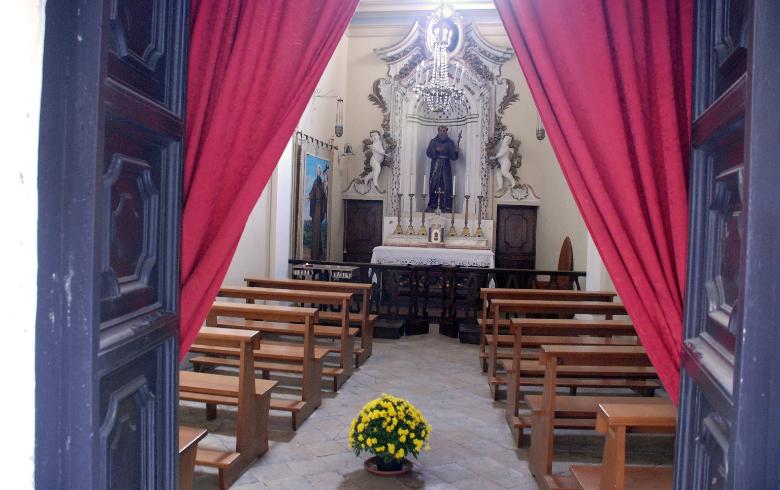The bell tower, originally isolated and then incorporated in the current building, was built in the 1580s.
The present form of the church is the result of an extension carried out between 1620 and 1650 and represents one of several local examples of Counter-reformation and Late Mannerism architecture. It has a longitudinal layout with a single nave covered by a ribbed barrel vault and it has a rectangular plan with five chapels along both long sides; at the bottom of the church, below the wooden choir and the 18th century organ, there are two compartments located inside the bell tower, one of which is now walled up.
It has no transept and a straight end, without apse: at the centre is the presbyterial chapel with the major altar and the canvas depicting Our Lady of Assumption and St. Pancrazio by Salvatore Pierella, dated 1737; on its sides there are two aristocratic chapels that are bigger than the other ones: the left one is the Sernicoli Chapel, the most richly decorated one in the church, and on its altar is the Madonna Enthroned with Child among SS. Biagio and Berardo by Giuseppe Cesari, called the Knight from Arpino, painted around the 1630s; the chapel on the right, instead, belonged to the Fioretti Family and hosts the canvas of Jesus' Circumcision by Calisto Calisti from Bagnaia, signed and dated 1640.
The side chapels belonged to private families or brotherhoods residing in this church. The chapels including the most significant artworks are the Chapel of the Society of the Holy Rosary including the big canvas of the Lady Mary of the Rosary by a Flemish painter and executed at the end of the 1560s; the St. Joseph Chapel with the canvas of the Virgin's Marriage by Vincenzo Manenti and the Chapel today called of the Baptism with the Baptismal Font made of finely carved marble, bearing the emblems of Calvi's community and of the Ceri-Anguillara family as well as showing the date 1559.


















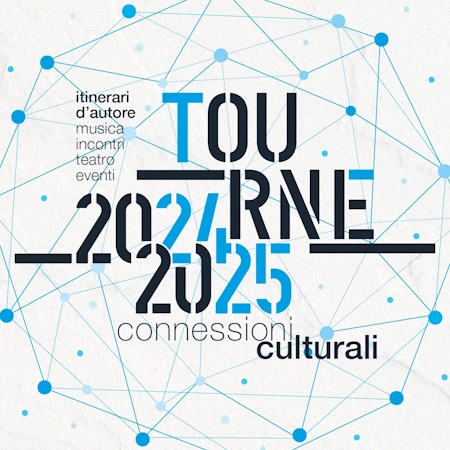
.jpg/0a2a3636-f203-e2b2-0d37-d8842262bd6d?width=456)

